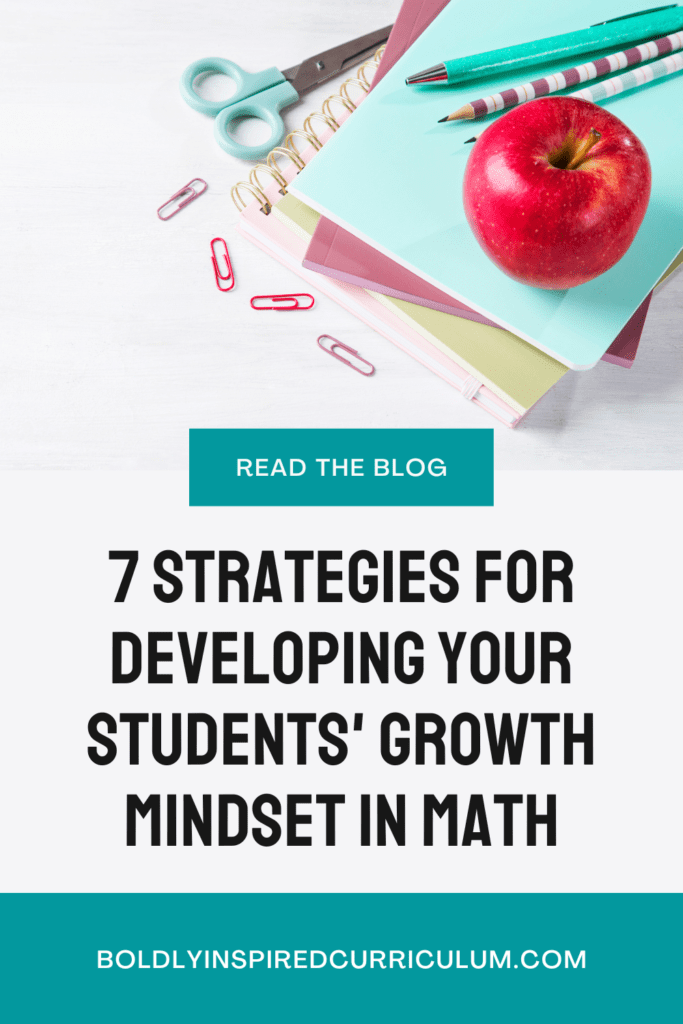So many students get to high school math already believing that they are “not a math person”. This leads to teachers desperately scrambling to convince them to have a growth mindset in math class. As teachers, we know that math is a learned skill that can only be improved with practice.
However, many of our students think you either “get” math or you don’t. Year after year, they have faced challenging problems and didn’t have the strategies to problem solve and work through them on their own.
In this blog post, we will discuss the importance of a growth mindset in math class and how to create an environment where your students will persevere.
Table of Contents
ToggleWant to learn more about supporting your students and growth mindset in math class? Check out these blog posts ↓

1. Model and promote persistence
One of the most important parts of having a growth mindset in math is not giving up. For example, teachers can support students and give them strategies to work through problems.
2. Positive self talk
Emphasizing the idea of not understanding a concept yet can make all the difference. Consistency is key when it comes to redirecting negative thoughts about math. The more your students hear you show them the positives the more likely they are to turn their negative thoughts into positive self talk.
3. Model making mistakes
This is one of my favorite strategies for every part of teaching math. The way that teachers respond to their own mistakes will impact the way their students begin to react to their own. The effect that normalizing mistakes in a math classroom makes is incredibly powerful.
4. Give constructive feedback
Students NEED actual constructive feedback in order to understand what they don’t understand. Just marking questions right or wrong is not helpful for their learning.
If your students think they answered the question correctly, they will become even more confused when they see it was wrong. Having explicit feedback on one or more incorrect concepts on an assignment makes the students feel supported and can help them reflect on what they are learning for future reference.
5. Teach in different styles
We all know that one size doesn’t fit all when it comes to teaching and learning. Luckily, most math topics have multiple ways to solve problems. I like to teach my students two or three different ways to complete a problem. Then, they can choose which method makes the most sense in their brain.
Comparison is a huge factor that negatively impacts a student’s growth mindset. By including choice in this way, your students will feel more comfortable working independently and asking questions.
6. Celebrate progress and effort
For students who see themselves as a “non-math” person, every progression and success needs to be celebrated (or at least acknowledged). It takes a lot for them to persist through problem solving and the extra praise goes a long way.
7. Set small, realistic goals
This goes hand in hand with celebrating student progress. By working with a student to figure out what they can manage in terms of work, they will feel less overwhelmed and more willing to progress.
I have worked with many students who express that having different types of problems and ways to solve them can be super overwhelming. If they are feeling this overwhelm from the beginning, it will be much more challenging for them to feel like they can progress and be successful.
By implementing these strategies, math teachers can create a positive and supportive learning environment that nurtures a growth mindset in their students. Ultimately, this can lead to increased confidence, motivation, and academic success in math and beyond.
